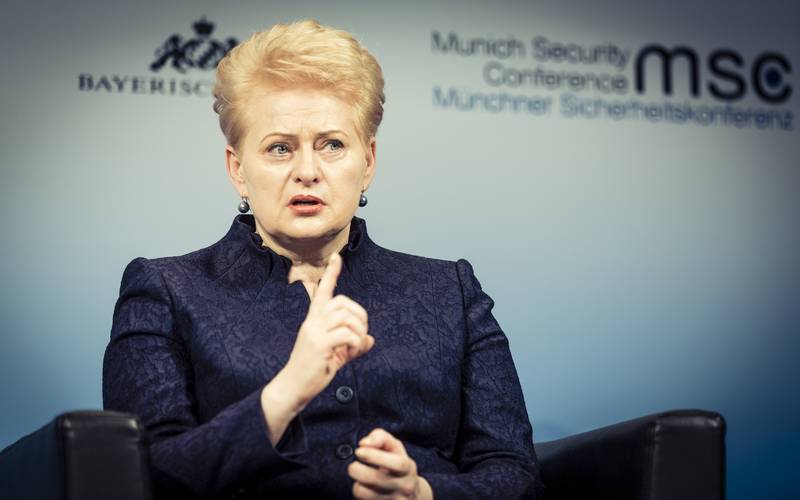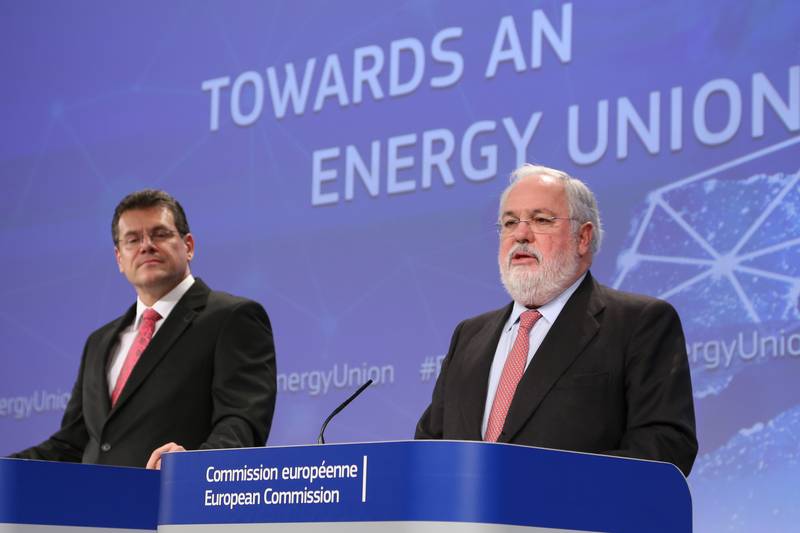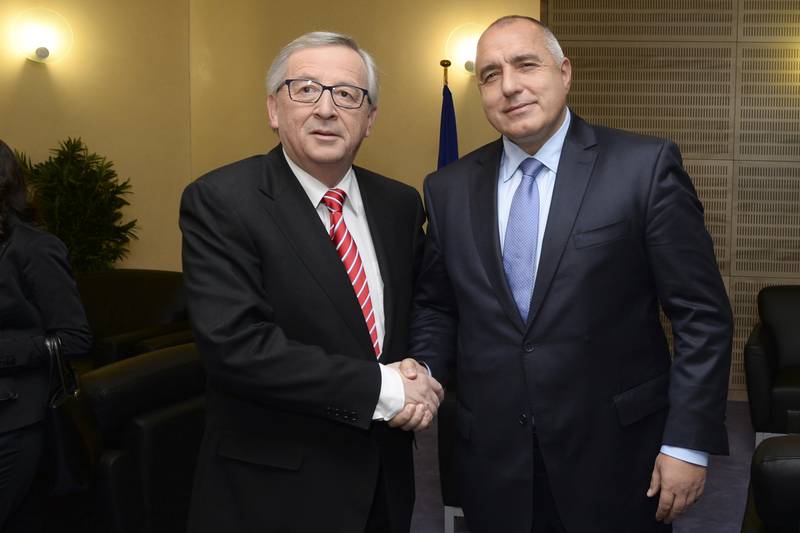Nord stream took off to Germany under the portrait of Catherine І
Ralitsa Kovacheva, April 13, 2010
 Hard work is going on in the compressor station “Portovaya”. On April 9th with a symbolic welding of two pipeline segments there, officially started the construction of “Nord stream” pipeline, which a year later is supposed to connect Russia and Germany. The 1,220 km long pipe will pass through the bottom of the Baltic sea. A large part of the pipes on Russian territory has already been built.
Hard work is going on in the compressor station “Portovaya”. On April 9th with a symbolic welding of two pipeline segments there, officially started the construction of “Nord stream” pipeline, which a year later is supposed to connect Russia and Germany. The 1,220 km long pipe will pass through the bottom of the Baltic sea. A large part of the pipes on Russian territory has already been built.
In colorful reports from the official ceremony Russian media describe the presence of Russian and European politicians and businessmen as a real gathering of a celebrities.
The Russian president Dmitry Medvedev and the European energy Commissioner Günther Oettinger personally attended the event. The German chancellor Angela Merkel sent a special video message:
energy Commissioner Günther Oettinger personally attended the event. The German chancellor Angela Merkel sent a special video message:
“Every year 55 billion cubic metres of natural gas are to flow from Russia to the European Union through “Nord Stream”. Both sides stand to benefit: For Europe, this is a major contribution to security of gas supplies. And with reliable buyers in Europe, Russia gains high stability in demand for gas.”
The former German chancellor and currently head of the “Nord stream” project Gerhard Schroeder defined the compressor station “Portovaya” as the Russian door to Europe that from that moment on had been opened.
President Dmitry Medvedev solemnly announced that yet in 2012 the pipeline would allow Russia to send the first gas deliveries to Europe, bypassing its neighbours:
 “This pipeline will ensure reliable gas supplies to European consumers at reasonable and acceptable prices, and it will guarantee us against some of the problems that arise out of shortcomings in the current regulatory base, including that regarding gas transit." Medvedev also said that Nord stream “represents our contribution to guaranteeing Europe’s energy security.”
“This pipeline will ensure reliable gas supplies to European consumers at reasonable and acceptable prices, and it will guarantee us against some of the problems that arise out of shortcomings in the current regulatory base, including that regarding gas transit." Medvedev also said that Nord stream “represents our contribution to guaranteeing Europe’s energy security.”
The symbol of the project, however, is not anyone of today's politicians but rather the Russian empress Catherine І, as Natalia Grib, a journalist from “Commmersant” newspaper wrote. The Chairman of Gazprom’s Management Committee Alexey Miller bestowed the State Hermitage Museum a portrait of the empress,  painted in 1712 by the Danish artist Andreas Möller and later bought by Gazprom from a private collector. The symbolic meaning of the painting comes from the fact that Catherine had been painted for this portrait in the German city of Greifswald - the final point of the “Nord stream” pipeline. An exact copy of the picture is now decorating the Portovaya compressor station, the point from where the pipes leave Russia for Europe.
painted in 1712 by the Danish artist Andreas Möller and later bought by Gazprom from a private collector. The symbolic meaning of the painting comes from the fact that Catherine had been painted for this portrait in the German city of Greifswald - the final point of the “Nord stream” pipeline. An exact copy of the picture is now decorating the Portovaya compressor station, the point from where the pipes leave Russia for Europe.
“Nord stream” indeed opens Europe’s heart for Russian natural gas. Gazprom is holding the controlling package of stocks, worth 51% of the project company, the German BASF/Wintershall and E.ON Ruhrgas have 20% each, and the Dutch N.V. Nederlandse Gasunie - 9%. It is soon expected the French company Gas de France Suez to join with 9% (4.5% of the share of two German stakeholders). The project operator is Nord Stream AG, chaired by Gerhard Shroeder. “Nord Stream” will consist of two parallel pipes. The first one, with a transit capacity of around 27.5 billion cubic metres a year is due to be completed in 2011. The second one - will be fully operational in 2012, thus doubling the annual capacity up to around 55 billion cubic metres. This is enough to supply more than 25 million households in Europe.
Various media quoted the deputy chief of Gazprom Alexander Medvedev saying he expected in the next week or two the first tranche of funding, amounting to nearly 4 billion, furnished in a consortium of 26 international banks, to become available. The total project cost is about 8 billion euro. The rest of the money will be paid by the shareholders themselves.
Unlike "Nord stream", its southern analog is facing serious challenges though. The Interfax agency cited Gazprom's external economic affairs department chief Stanislav Tsigankov, who angrily accused the Italian company Eni of blocking “South stream”: “There is nothing constructive from them, no evidence of work … Not to mention the payments on their side, we still pay for everything ourselves”
Tsigankov refused to comment if Eni's position on “South stream” was related to the alternative project - “Nabucco” in any way. As you know recently Eni's director Paolo Scaroni proposed the two pipes to be united in one project. Scaroni visited Moscow on April 12 and had a meeting with Gazprom's chief Alexey Miller. Both agreed then that more active work was necessary within the project company South Stream AG.
Commenting on Romania's interest to take part in the project, Tsigankov said: “ Romania could play specific, possibly significant role in the project “. He explained that currently the construction of a drainage in the Romania's direction is being considered, as well as laying the pipeline on its territory (instead of Bulgaria). A top Gazprom manager said that everything would depend on Bulgaria's position.
Romania could play specific, possibly significant role in the project “. He explained that currently the construction of a drainage in the Romania's direction is being considered, as well as laying the pipeline on its territory (instead of Bulgaria). A top Gazprom manager said that everything would depend on Bulgaria's position.
The “South stream” pipeline, which aims at bypassing some risky transit countries, is planned to pass through Bulgaria from Russia and reach Italy and Austria. The planned capacity is 63 billion cubic meters annually, and the cost of the project, according to Gazprom, is 8.6 billion euros. Russia has already signed agreements for the project with Bulgaria, Serbia, Hungary, Slovenia and Croatia.
 At the same time the European energy commissioner Guenter Oettinger said in an interview with the Agency for Gas Information that the Commission may consider the inclusion of "South Stream" in the trans-European energy system. However, this might happen only when the project is ready. Oettinger gave similar indications during his visit to Sofia in early March.
At the same time the European energy commissioner Guenter Oettinger said in an interview with the Agency for Gas Information that the Commission may consider the inclusion of "South Stream" in the trans-European energy system. However, this might happen only when the project is ready. Oettinger gave similar indications during his visit to Sofia in early March.
Currently “South Stream” remains pure theory. Its European alternative “Nabucco” - likewise. The Nord Stream, however, is passing through the Baltic Sea and is knocking on Germany's door, under the watchful eye of empress Catherine.
 Dalia Grybauskaite | © MSC/Koerner
Dalia Grybauskaite | © MSC/Koerner Maros Sefcovic, Miguel Arias Canete | © European Commission
Maros Sefcovic, Miguel Arias Canete | © European Commission Jean-Claude Juncker, Boyko Borissov | © European Commission
Jean-Claude Juncker, Boyko Borissov | © European Commission